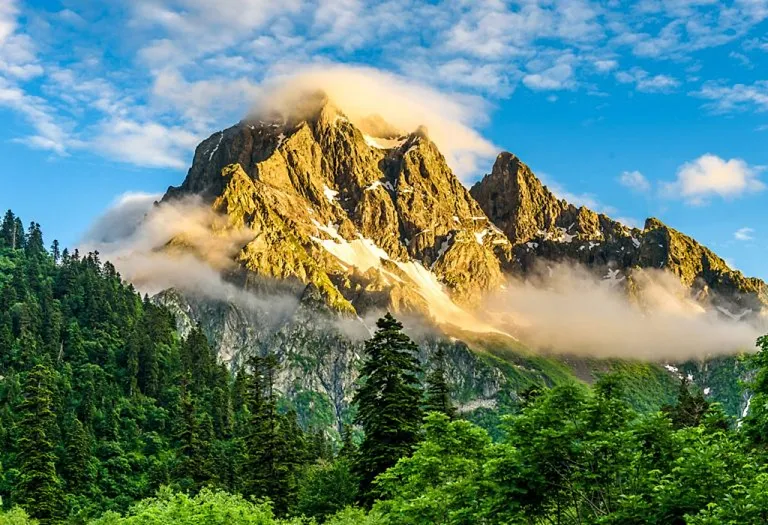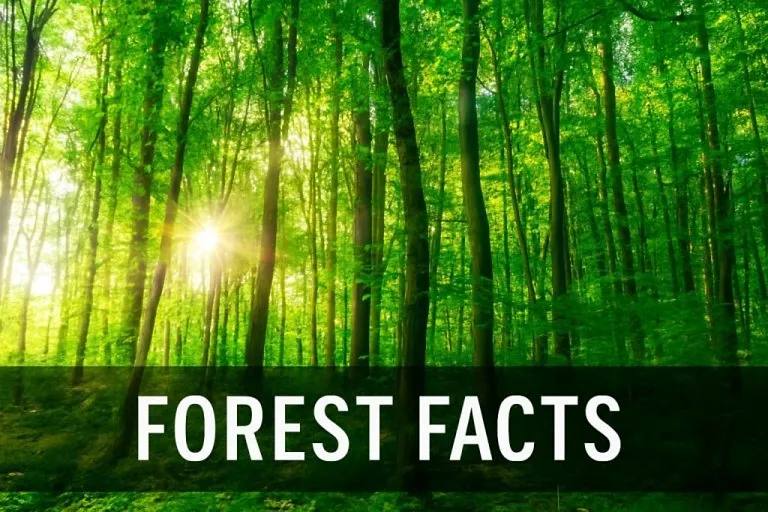14 Interesting Facts About Mountains for Kids
- What Are Mountains?
- How Are Mountains Formed?
- Where Are Mountains Found?
- What Are the Types of Mountains?
- What Is Meant by a Mountain Range?
- How Is a Mountain Measured?
- What Is Mountain System?
- Do People Reside in the Mountains?
- Is It Difficult to Live in the Mountains?
- Which Sports/Games Can Be Played in a Mountain?
- Other Important Facts About Mountains for Kids
- FAQs
As soon as the holiday season begins, families start planning trips to distant locations. Many families prefer going to hill stations and up to the mountains to have a wonderful vacation by themselves. Children love being there since the view from mountaintops is breathtaking, and the lovely atmosphere filled with silence and greenery can be quite serene. It’s a different world out there for young kids, especially when our cities today are merely dense forests of concrete blocks with barely any sign of lush vegetation or animals around. Stoking the interest of your kid in how the mountains were formed, and telling the story of how Earth takes various shapes can get them excited for yet another trip and dive into their books or the Internet to look for more on mountain facts for kids.
What Are Mountains?
For a kid, the environmental definition of a mountain is something that is taller & steeper than a hill.
In proper terms, a mountain can be described to be a formation of land which rises above the surrounding area and has a specific point at its top, called the peak.
Most elevations that are taller than 600m are termed mountains. Anything that is smaller than a mountain is generally called a hill.
Let’s learn about some impressive and mind-blowing information about mountains that are sure to make your kiddo stand out in his geography lessons.
How Are Mountains Formed?
Some natural phenomena can result in the formation of mountains, both on land and under the sea. The entire process is quite complicated, but can be broken down into some major aspects. The surface of the Earth is a combination of various land masses, called tectonic plates. These plates are moving all the time, and they also tend to collide with each other. The collision usually causes the land to fold between them, leading it to rise above the surface and form a mountain.
According to the other phenomena, mountains form in a completely different way. For example, the eruption of a volcano from under the Earth can cause a mountain to form. Similarly, the rocks and other sediments could assimilate together to create a small mountain, too.
Where Are Mountains Found?
Mountains are one of the largest naturally occurring structures on Earth that can be found in nearly every area of the globe. When compared across the world, nearly 75% of countries have their own mountain ranges. All the continents have their mountain ranges with some of the tallest peaks, as well as the oceans surrounding us, with expansive mountain ranges spreading far and wide below.
What Are the Types of Mountains?
Since mountains are formed in various ways and due to a variety of natural phenomena, their structure and shape may vary. This enables the categorisation of mountains. A few major ones are described below.
1. Dome Mountains
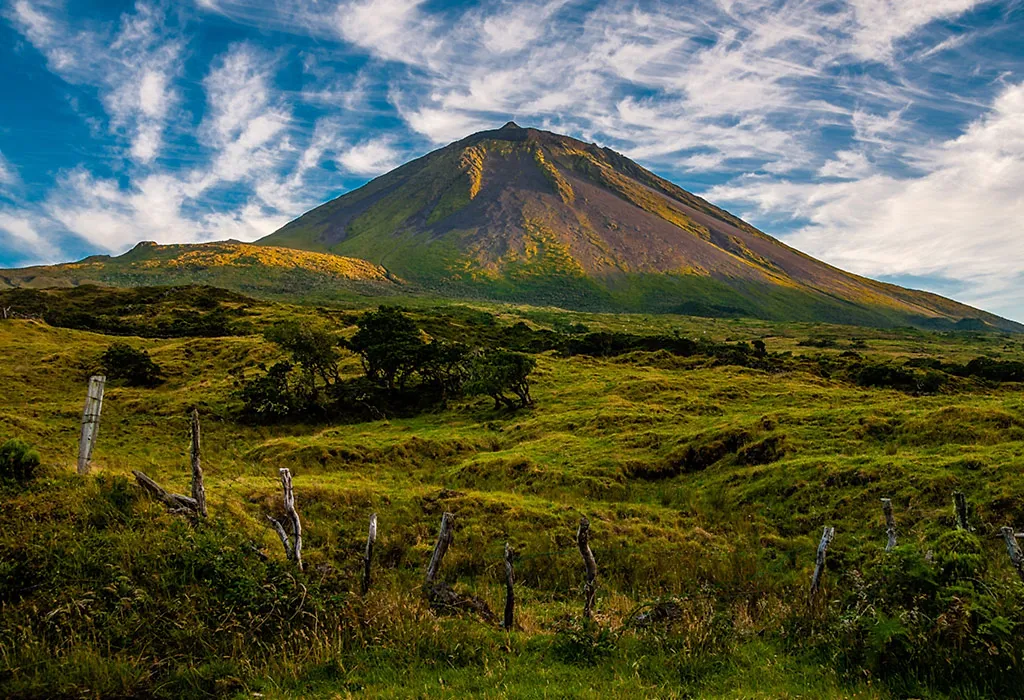
As mentioned earlier, a volcanic eruption can also result in the formation of a mountain. During an eruption, the molten rock, also known as magma, present beneath the Earth’s surface, is spewed outward from the volcano’s mouth or emerges from various cracks and fissures surrounding it. The cold temperature of the atmosphere eventually cools the magma, causing it to solidify into a rock-like structure. Most of these magma structures assimilate into a dome-like shape, giving rise to dome mountains. At times, the consistent erosion of mountain tops by the wind makes the dome even more evident.
2. Plateau Mountains
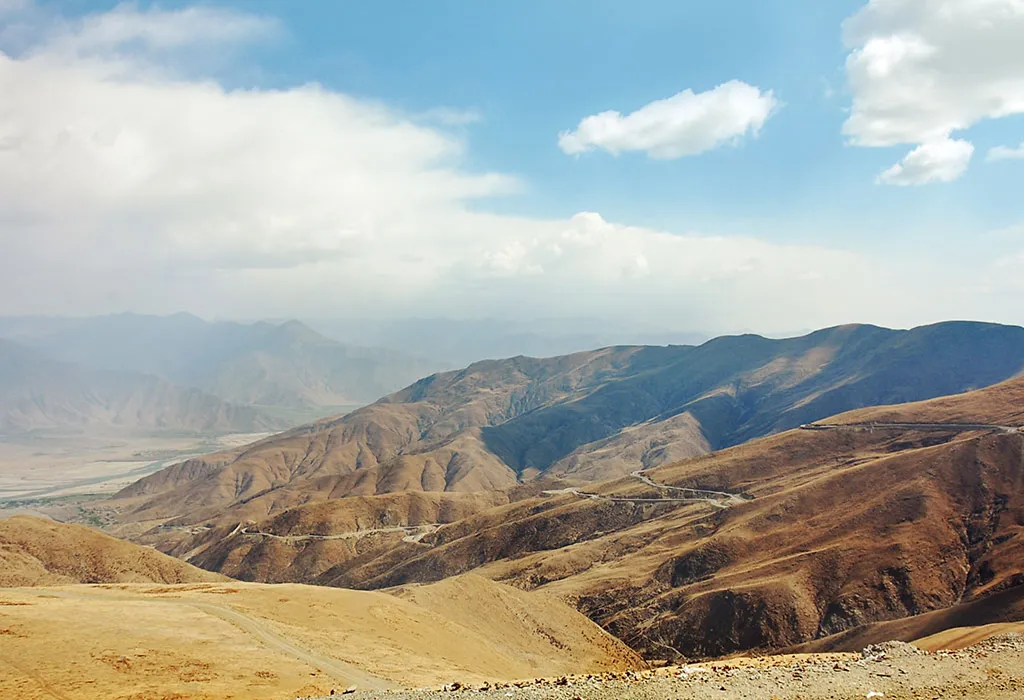
Among various natural phenomena, land erosion is the most frequent one. These can be the result of rain, water, rivers, wind, and so on. Any land masses that are formed either by the plates folding over each other or by volcanic eruptions undergo substantial erosion over the years. These can cause their peaks to flatten completely, making vast plains on top. These land masses with flat peaks are called plateau mountains.
3. Fault Block Mountains
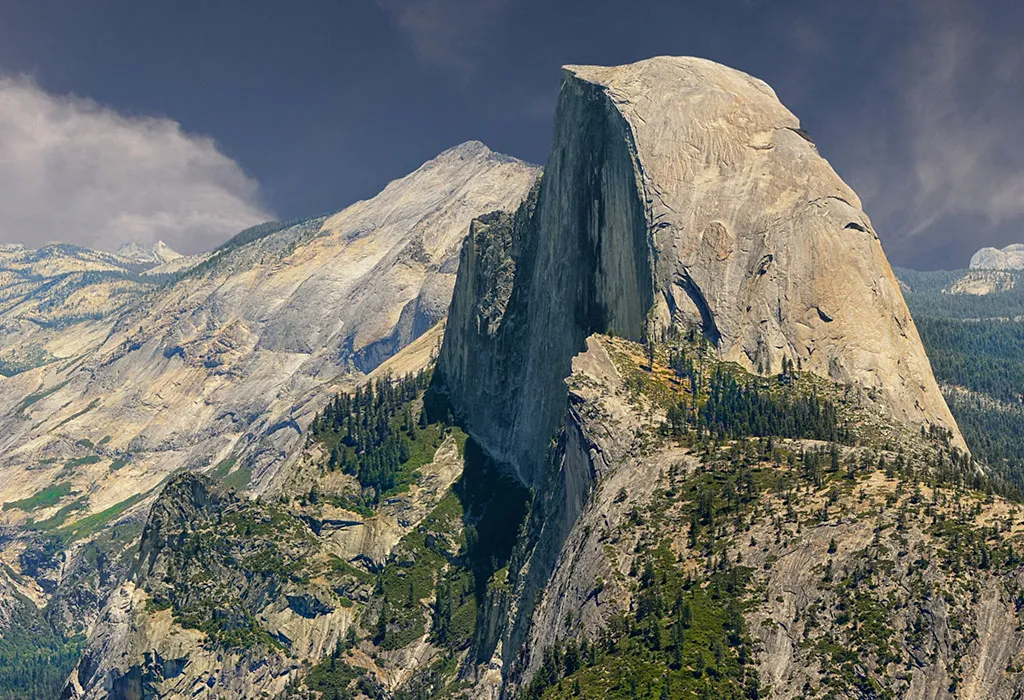
The surface of the Earth is not homogeneous and continuous. Various cracks are present all over it, which run for long distances, termed as faults. These faults tend to meet each other in specific locations, causing some amount of landmass to rise above, while the rest of it to enter the Earth’s surface. A stacking of such layers takes place over an extended period, forming fault block mountains. Since their formation process is so specific, the structure of such mountains is consistent across different regions. These mountains have a slope at the back region, while the front part is extremely steep. The Sierra Nevada and Harz mountain ranges are famous fault block mountains.
4. Volcanic Mountains
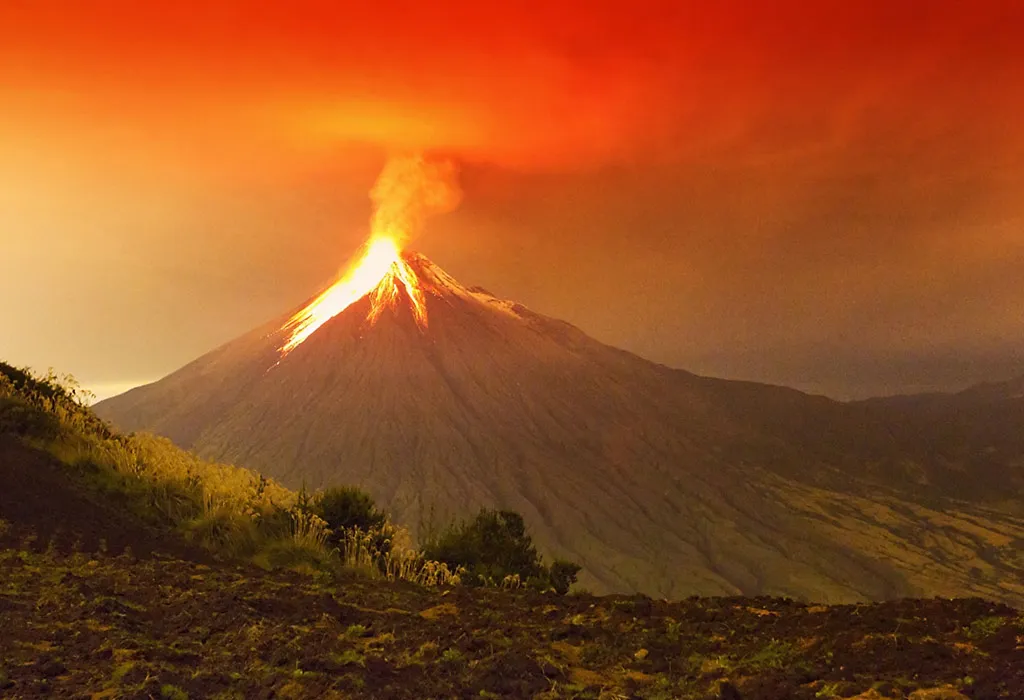
These can be termed as the initial phase of most mountains which later take either the form of dome mountains or plateau mountains, depending on which part of the world they are located. Whenever a volcanic eruption occurs, a significant amount of lava is expells from its vent, along with magma. This lava continues to flow around the surface as long as it is hot, and also pools up in certain areas. Later, as its temperature reduces and it cools down, the lava hardens to form a solid rocky structure, which is mixed with magma and volcanic rocks. This pretty much forms a volcanic mountain.
5. Fold Mountains
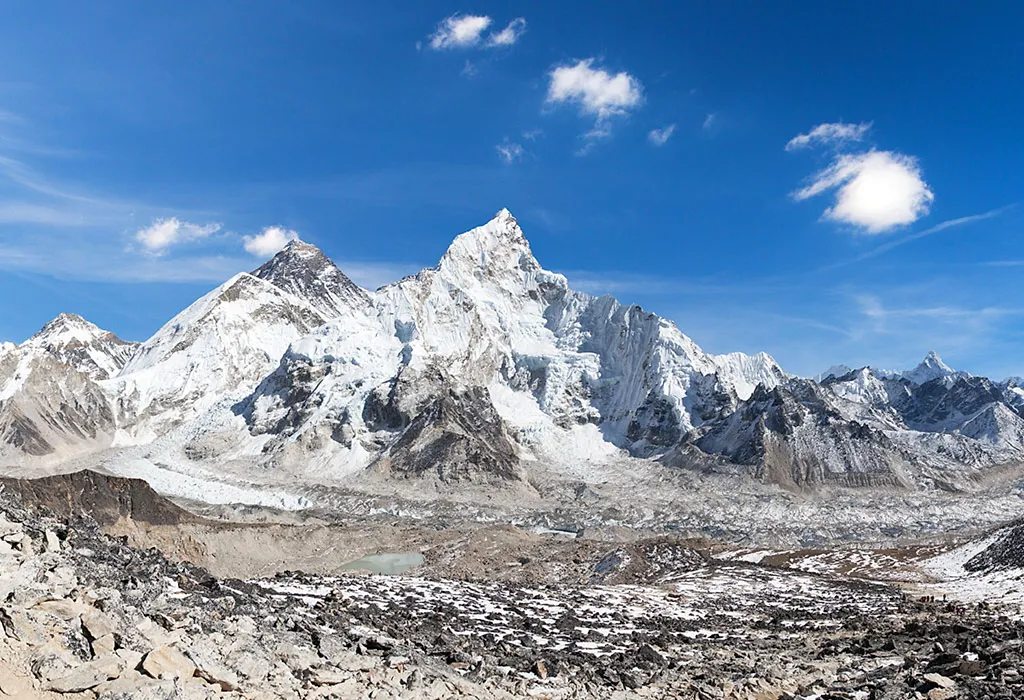
Some of the largest mountain ranges that are present on the planet are fold mountains. The process of their formation is the most common one, which also ends up causing their height to increase over time. The tectonic plates of the Earth are always moving around without our knowledge. Whenever these plates collide head-on, their combined force pushes the landmass tremendously, causing it to rise on both ends and form towering structures. The Himalayas, Andes, Alps, and many others are stunning examples of how massive fold mountains can turn out to be, and how powerful the tectonic forces of the Earth generally are.
What Is Meant by a Mountain Range?
The most straightforward definition of a mountain range for kids is a collection of mountains. These are usually a large group of mountains that tend to be quite close to each other and are usually caused by similar formation processes. On a general note, if a group of mountains runs for around 1500 kilometres or more, it is termed to be a mountain range. The Himalayan mountain range is one of the largest mountain ranges in the world.
How Is a Mountain Measured?
Since the height of the mountain is what is used to define the tallest peak and numerous other parameters, there are multiple ways to establish the reference level against which a mountain’s height can be measured.
The most common method is to measure its height from sea level up to the peak. In certain mountains, the height is also measured from their exact base up to the peak, which can be different from the previous one. A highly accurate methodology applied to mountains above and below the sea is to measure the distance from the centre of the earth to the mountain’s peak.
What Is Mountain System?
Just like a group of mountains is termed to be a range, a collection of such ranges is called a mountain system. These contain numerous peaks and valleys, making them a popular attraction for tourists and residents nearby.
Do People Reside in the Mountains?
It might seem surprising, but a lot of people live in the mountain ranges as well as pretty close to them. It has been surmised that nearly a tenth of the total population of the world resides within various mountain ranges.
Is It Difficult to Live in the Mountains?
While most of us enjoy a small holiday or a visit to the mountains, living there is a completely different experience. The percentage of oxygen is quite low, which can make it difficult to breathe. The soil may not always be fertile, and water tends to flow down the ranges. However, people can make a living by appealing to the tourists.
Which Sports/Games Can Be Played in a Mountain?
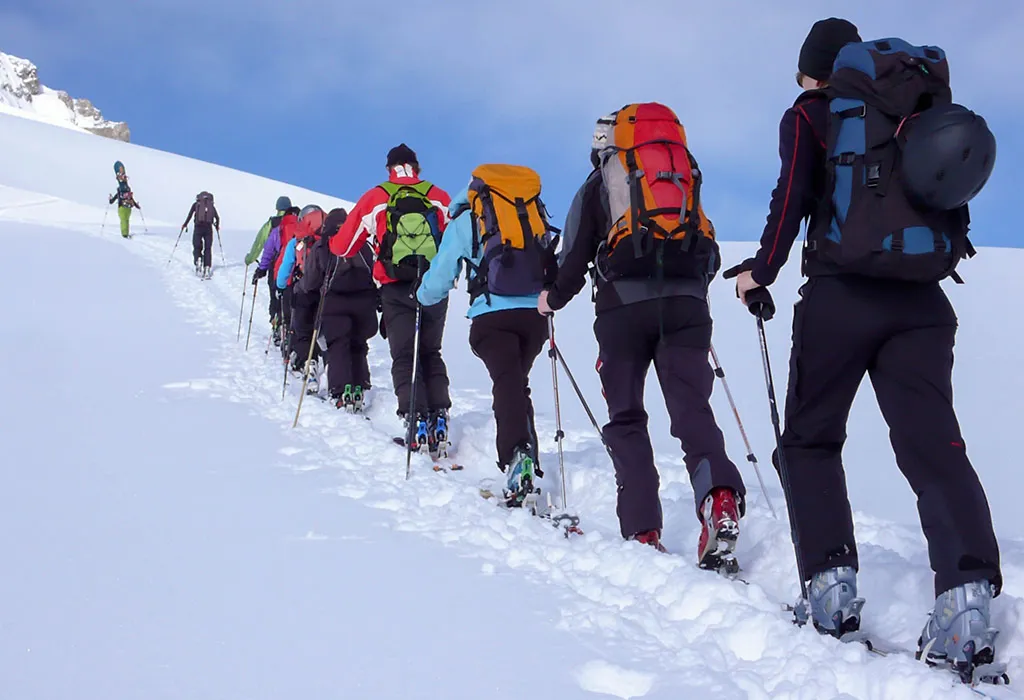
The height of the mountains has a great advantage for sports, allowing a large variety of them to be executed and enjoyed. Right from rock climbing to bungee jumping, as well as paragliding and snow-skiing, simple sports such as water rafting can be enjoyed in the gorges between the mountains, too.
Other Important Facts About Mountains for Kids
Apart from the information presented above, which can provide a great foundation for your kids, here are some interesting facts related to mountains that can leave them surprised, too.
- Mount Everest is currently the highest peak in the world, and yet its height continues to grow each year.
- The temperatures on high mountains range from extreme heat to shuddering cold, causing the trees to be in the form of short shrubs.
- Just like Mount Everest is the highest peak on Earth, Mount Olympus is the highest peak in Greek mythology.
- Amongst the tallest peaks in the entire world, the top 14 peaks are present in Asia, with most of them spread around the Himalayan mountain range.
- In the year 2005, a couple decided to get married atop a mountain peak, making their wedding the first of its kind.
- While we are only aware of mountains on land, there are expansive mountain ranges under the sea, with some peaks being taller than Everest.
- Mountains are present on other planets as well. Mars has one of the tallest peaks in our solar system, called Olympus Mons.
- Across the entire Earth, nearly 1/5th of its surface is covered with mountains of various types.
- Mountains are typically the largest source of fresh water on the planet. Every year the ice on the mountaintops melts to keep the rivers flowing.
- While more than 6000 people have reached the peak of Everest, there has also been a 13-year-old boy who has achieved the same feat.
- Mauna Kea, located in Hawaii, is over 10,000 metres tall, but only 4,207 metres is above sea level. Do you know why? Because the rest of the mountain is found underwater.
- Bear Grylls, then aged 23, became the youngest person to climb Mount Everest, which is 8848 metres above sea level, in 1998.
These fun facts about mountains for kids are impressive and easy to learn and make for good trivia questions for kids on geograophy.
FAQs
1. What is the type of weather in the mountains?
Because mountains have a high elevation, the temperature on mountains decreases and the pressure increases as the height increases. The temperature is often colder at higher elevations compared to lower ones. You can find snow on mountains on high elevations where the temperature is less than 0 degrees. Mountains also usually have a frequent amount of precipitation, which frequently comes in the form of rain, snow, and hailstorms. What’s more interesting is that the weather in the mountains changes quickly, so people usually find themselves experiencing moderate to dangerous conditions. And since every mountainous region has different weather conditions, it is crucial to be prepared when you visit one.
2. What is the world’s longest mountain range?
The Andes is the longest mountain range in the world, which is about 5,500 miles long.
3. What is the name of the mountain range that Mount Everest is part of?
Mount Everest is part of the Himalayan Range, which is popularly called the Himalayas. The Himalayan range passes through India, Nepal, China, Bhutan, Pakistan, and Afghanistan.
4. What is the highest peak on the British Isles?
Ben Nevis, standing tall at 1,345 metres, is the highest peak on the British Isles.
Putting together some rocky mountain facts and information for kids can instil within children a sense of respect towards nature and natural habitats. Conservation of the environment is another aspect that children must be fully aware of. These facts can increase their interest in different aspects of Earth and its surroundings.
Also Read:
Rainbow Facts for Kids
Plants Facts for Children
Cloud Facts for Children
Earth Facts for Children
Facts about Science for Kids
Tornado Facts and information for Kids
Was This Article Helpful?
Parenting is a huge responsibility, for you as a caregiver, but also for us as a parenting content platform. We understand that and take our responsibility of creating credible content seriously. FirstCry Parenting articles are written and published only after extensive research using factually sound references to deliver quality content that is accurate, validated by experts, and completely reliable. To understand how we go about creating content that is credible, read our editorial policy here.






